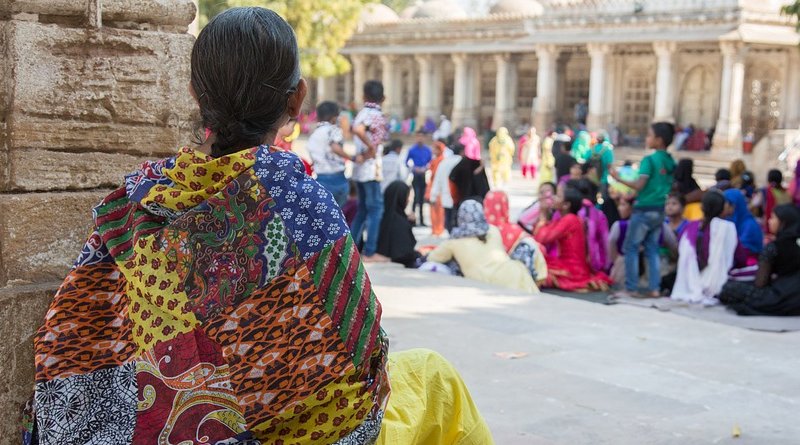Women And The Kashmir Conflict – Analysis
By IPCS
By Zoya Raj Singh*
The Jammu and Kashmir (J&K) conflict witnessed an evolutionary turn with the onset of militancy in the region from the late 1980s onwards. The women of J&K took on multitudinous roles as the conflict progressed. These roles often varied from contributing to the militancy; roles emerging as a consequence of the conflict; and those resulting from the spread of Islamic fundamentalism in J&K. A reflection on these diverse roles reveals the dual nature of women’s engagement with the conflict, with some women exercising free will in their choices, while others could not.
Contributions to Militant Activities
The initial stages of militancy in J&K—1989-1990—gained widespread support from women in the region. However, the author’s research reveals that women’s participation in the militant movement was often seen as an extension of the gender roles and stereotypes prevalent in most South Asian societies. They participated in the militancy only indirectly, assisting the azadi movement from the side-lines.
Their support was in fact coordinated through organisations such as the Dukhtaran-e Millat (DeM) and the Muslim Khawateen Markaz (MKM). While these organisations intended to advocate for social reform—particularly women’s rights—their assistance to militant activities soon emerged. Women associated with these organisations were however rarely seen on the frontlines. While certain militant organisations were known to have trained women in handling arms and ammunition, guerrilla warfare, and espionage, there is little evidence to suggest the participation of J&K women as combatants in the conflict.
A popular manifestation of women’s involvement was the chanting of slogans at protests and funeral processions. Women often sang resistance songs about the glory of azadi and the ‘martyrs’ who died fighting for it. These slogans intensified sentiments of loss and disaffection towards the state and assisted in mobilising local support for the militancy.
Women were also engaged as couriers of resources for or between militants, including funds and arms. They were further involved in other ways such as stone pelting, informing militants about Indian security forces’ movements, disallowing the latter from entering roads and narrow alleys by blocking their paths, and on occasion, providing food and shelter to militants.
Roles Driven by Necessity
Although many women engaged with the conflict voluntarily, there were others who had little choice and were forced to take on roles that emerged as a result of the conflict. For instance, the death or enforced disappearances of fathers, husbands, and brothers pushed women into adopting the role of primary breadwinners for their families.
As a result, female-headed households began to emerge across J&K. These new responsibilities were accompanied by psychological trauma, insufficient incomes, and government negligence. A prominent example of governmental neglect and potentially, deliberate misconduct, was seen in the data discrepancy on disappeared persons. This resulted not only in a lack of information about those missing or probably deceased but also challenged women’s ability to obtain official documents—such as death certificates—required to seek financial compensation from the state.
Stepping into these new roles proved to be particularly disadvantageous for women from poorer socio-economic backgrounds owing to a lack of experience and access to resources. While educated middle-class women were able to hold professional jobs, less privileged women were forced and often threatened to operate as mukhbirs (informants) for both militants as well as Indian security personnel. Often sexually exploited, women mukhbirs were ordered to establish linkages with militant groups and the armed forces, to enable information-gathering on movements and activities.
Impact of Islamic Fundamentalism
From the 1990s onwards, the conflict acquired a predominantly religious character. The end of the Soviet-Afghan War led to Islamic extremists infiltrating J&K. These largely foreign militants embarked on a campaign to culturally homogenise the region, with the aim of establishing religion-based separatism.
There were kidnappings, rapes, and murders of Hindu women. Muslim women wererestricted with diktats enforcing the veil, where a refusal or inability to do so invited the threat of punishment, even death. As a central focus of the militants’ cultural campaign, women became unwilling representatives of the gradual Islamisation of the state.
Rising instances of violence against women—by security forces as well as militants—and exhaustion caused by prolonged disturbances led to a downward trend in women’s support to militant activities. Their efforts were largely diverted towards forming various Civil Society Organisations (CSOs) across J&K, such the Association of Parents of Disappeared Persons and the Jammu and Kashmir Coalition of Civil Society Organisations.
Though largely absence from combat roles, women have been central to J&K’s conflict dynamics. They have in fact taken on, or been made to take on, a wide array of other roles: as peripheral supporters of the militancy, bread-winners for their families, and participants in civil society initiatives. Of course, not all women have experienced the conflict the same way. Free will and individual agency, access to resources, and socio-economic backgrounds have contributed to the roles they have played predominantly.
*Zoya Raj Singh is a Research Intern with IPCS’ Centre for Internal and Regional Security (IReS).

